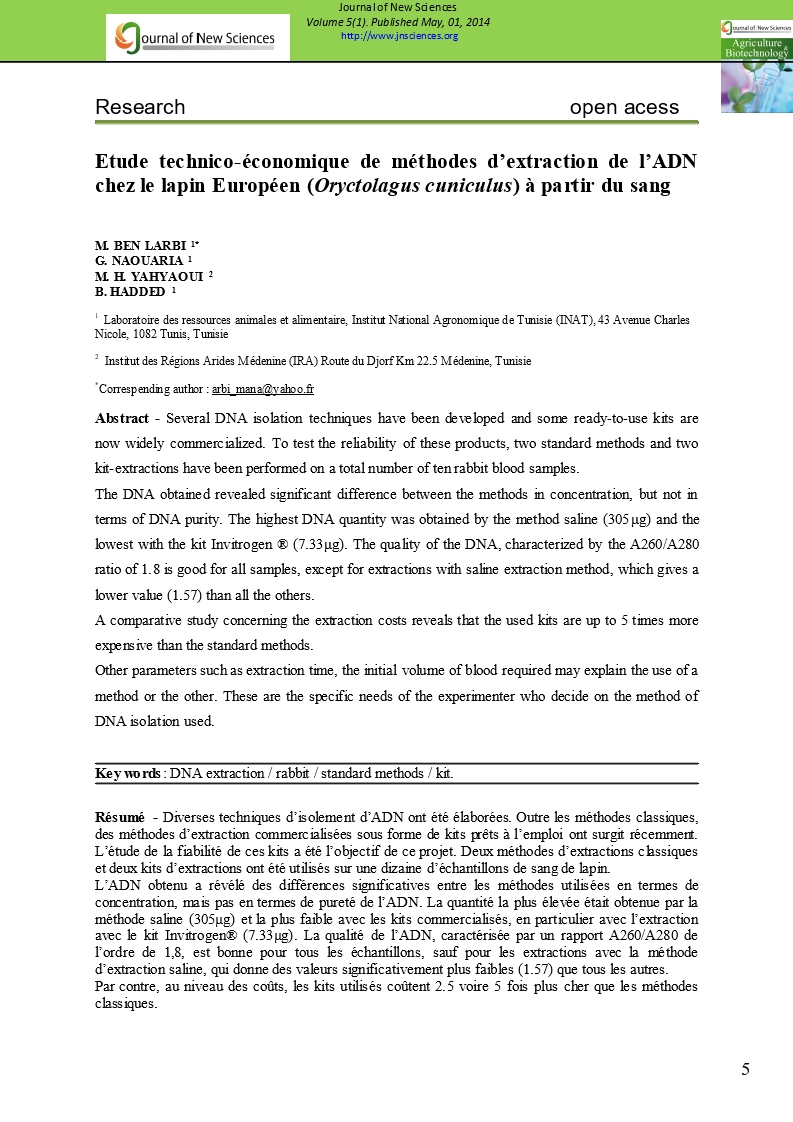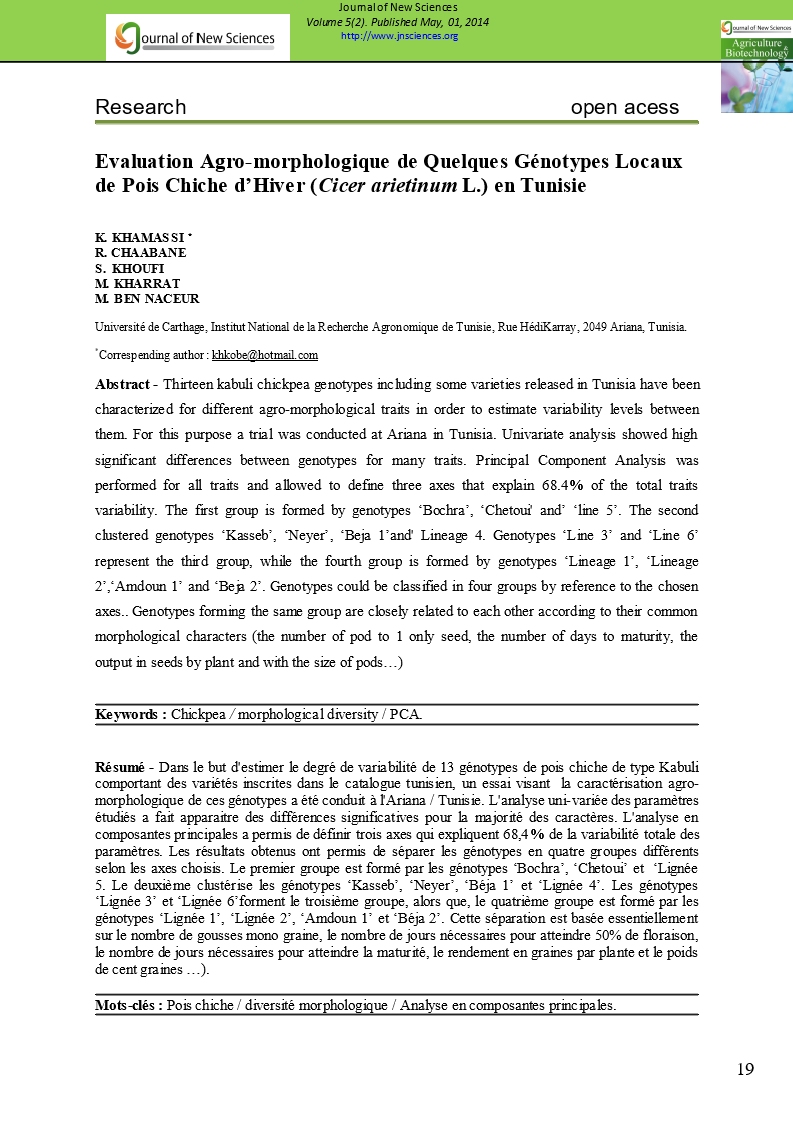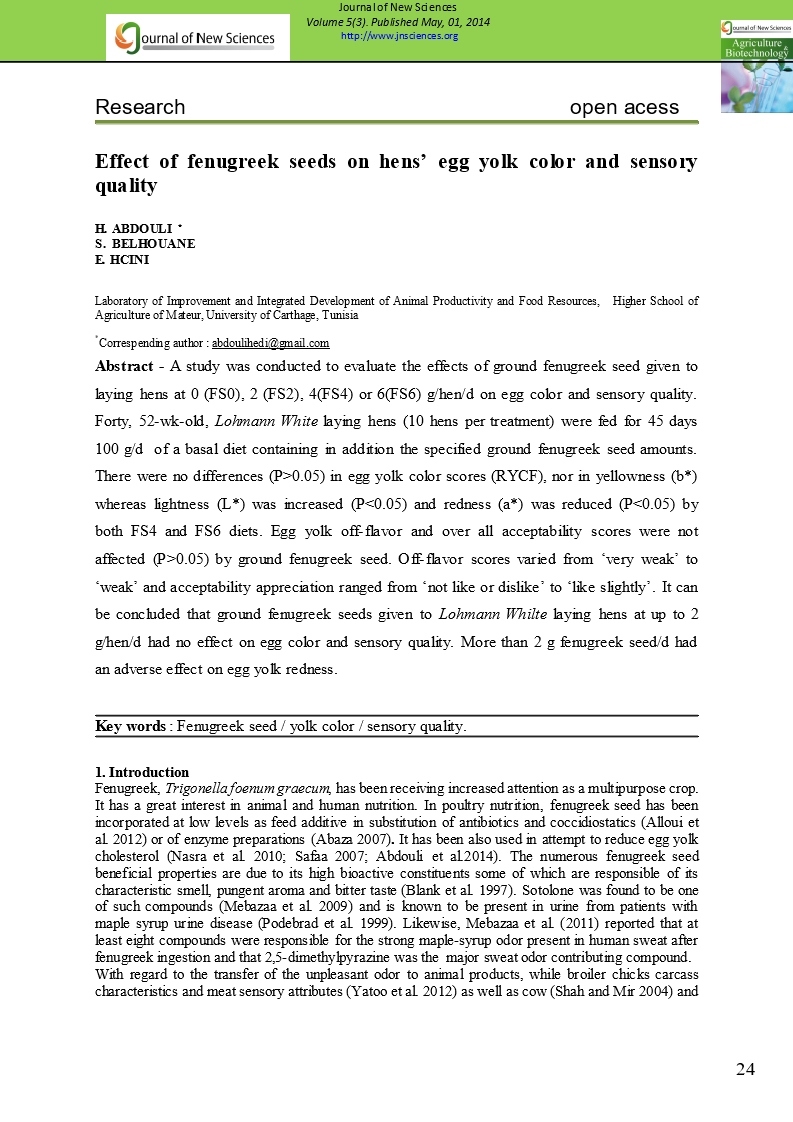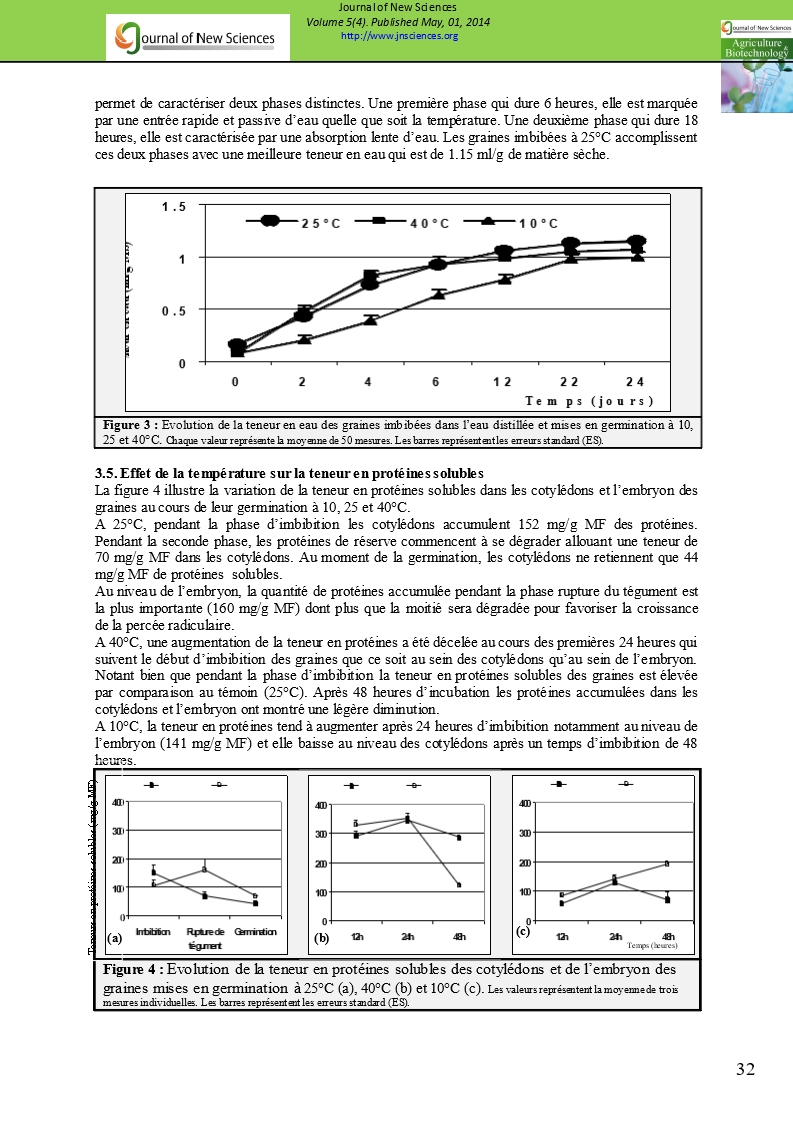- Category: Volume 5
- Hits: 11290
Etude technico-économique de méthodes d’extraction de l’ADN chez le lapin Européen (Oryctolagus cuniculus) à partir du sang

M. BEN LARBI 1*
G. NAOUARIA 1
M. H. YAHYAOUI 2
B. HADDED 1
1 Laboratoire des ressources animales et alimentaire, Institut National Agronomique de Tunisie (INAT), 43 Avenue Charles Nicole, 1082 Tunis, Tunisie
2 Institut des Régions Arides Médenine (IRA) Route du Djorf Km 22.5 Médenine, Tunisie
Abstract - Several DNA isolation techniques have been developed and some ready-to-use kits are now widely commercialized. To test the reliability of these products, two standard methods and two kit-extractions have been performed on a total number of ten rabbit blood samples.
The DNA obtained revealed significant difference between the methods in concentration, but not in terms of DNA purity. The highest DNA quantity was obtained by the method saline (305μg) and the lowest with the kit Invitrogen ® (7.33μg). The quality of the DNA, characterized by the A260/A280 ratio of 1.8 is good for all samples, except for extractions with saline extraction method, which gives a lower value (1.57) than all the others.
A comparative study concerning the extraction costs reveals that the used kits are up to 5 times more expensive than the standard methods.
Other parameters such as extraction time, the initial volume of blood required may explain the use of a method or the other. These are the specific needs of the experimenter who decide on the method of DNA isolation used.
Key words: DNA extraction / rabbit / standard methods / kit.
Résumé - Diverses techniques d’isolement d’ADN ont été élaborées. Outre les méthodes classiques, des méthodes d’extraction commercialisées sous forme de kits prêts à l’emploi ont surgit récemment. L’étude de la fiabilité de ces kits a été l’objectif de ce projet. Deux méthodes d’extractions classiques et deux kits d’extractions ont été utilisés sur une dizaine d’échantillons de sang de lapin.
L’ADN obtenu a révélé des différences significatives entre les méthodes utilisées en termes de concentration, mais pas en termes de pureté de l’ADN. La quantité la plus élevée était obtenue par la méthode saline (305µg) et la plus faible avec les kits commercialisés, en particulier avec l’extraction avec le kit Invitrogen® (7.33µg). La qualité de l’ADN, caractérisée par un rapport A260/A280 de l’ordre de 1,8, est bonne pour tous les échantillons, sauf pour les extractions avec la méthode d’extraction saline, qui donne des valeurs significativement plus faibles (1.57) que tous les autres.
Par contre, au niveau des coûts, les kits utilisés coûtent 2.5 voire 5 fois plus cher que les méthodes classiques.
D’autres paramètres comme la durée de l’extraction, le volume initial de sang requis peuvent expliquer le recours à l’utilisation d’un procédé ou l’autre. Ce sont les besoins spécifiques de l’expérimentateur qui décident de la méthode d’isolement d’ADN utilisée.
Mots clé : extractions, ADN, lapin, méthodes classiques, kits



